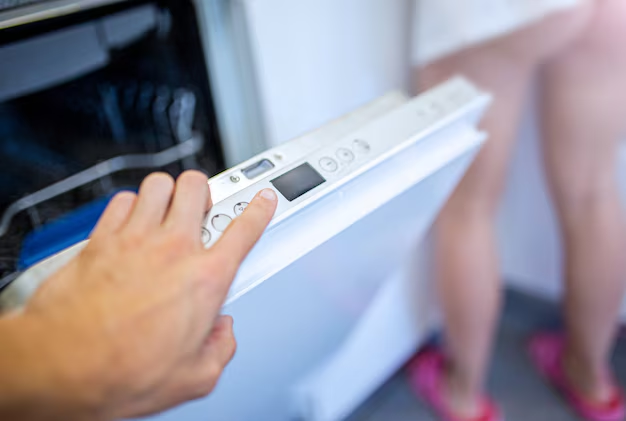How to Efficiently Defrost Your LG Refrigerator: A Practical Guide
Does your LG refrigerator seem less efficient than usual? Are you encountering frost buildup? These are common issues that might indicate it's time to defrost your appliance. In this article, we'll explore efficient ways to defrost your LG refrigerator, ensuring it operates at peak performance. Plus, you'll gain insights into related topics like maintaining your refrigerator, understanding frost issues, and optimizing your appliance's longevity.
Why Defrosting is Essential
Preventing Frost Accumulation
Frequent or excessive frost buildup can hinder your refrigerator's ability to cool effectively. This accumulation can obstruct airflow, reduce cooling capacity, and potentially lead to higher electricity bills, as the compressor works overtime to maintain desired temperatures.
Prolonging Appliance Life
Regular defrosting plays a vital role in extending the lifespan of your appliance. Failure to manage frost can strain components like the compressor and evaporator, leading to costly repairs or replacements down the line.
Ensuring Consistent Performance
A frost-free refrigerator guarantees uniform cooling, keeping your food fresh and safe. This ensures you're getting the most out of your LG refrigerator in terms of performance and efficiency.
Identifying When to Defrost
Spotting the signs early is the key to timely defrosting. Look for:
- Frost Layer over ¼ Inch: Thickness beyond this is a clear indicator.
- Reduced Cooling Efficiency: Noticeable changes in food preservation.
- Strange Noises: Your refrigerator might work louder than usual.
- Increased Energy Consumption: Unexplained spikes in your electricity bill.
How to Defrost an LG Refrigerator
Preparing for Defrosting
Gather Your Supplies:
- Towels or rags to absorb water
- Bowls or pans to catch dripping water
- A sponge and cleaning solution
- Soft cloths for wiping
Unplug the Refrigerator: Always prioritize safety by disconnecting power.
Empty Its Contents: Remove all perishables, storing them in a temporary cooler with ice packs.
Protect Floors: Use towels around the base to catch any melting frost.
The Defrosting Process
Open Doors Wide: Allow warm air to circulate, accelerating the melting process.
Remove Loose Frost: Gently scrape off large frost chunks using a plastic spatula. Avoid metal tools to prevent damage.
Patience is Key: Let natural warmth do the work. Speed the process by placing a bowl of hot water inside, changing it as needed.
Wipe and Clean: As ice melts, use a cloth to absorb the water and a gentle cleaner to sanitize.
Dry Thoroughly: Ensure all parts, including the inside walls and drawers, are dry before plugging back in.
Restarting Your Refrigerator
Plug the Power Back In: Restore power and let the refrigerator settle before restocking.
Check Settings: Verify temperature settings are adjusted correctly for optimal performance.
Return Items: Organize and return food to its rightful place, ensuring air vents are not obstructed.
Additional Tips for Avoiding Frost Issues
Regular Maintenance
- Check Seals: Ensure door gaskets are tight and create an adequate seal.
- Organize Smartly: Keep vents clear for proper air distribution.
- Avoid Overstuffing: Too much content disrupts airflow, potentially causing frost.
Optimizing Appliance Settings
- Correct Temperature: Regularly check and maintain ideal temperatures (around 37°F for the fridge and 0°F for the freezer).
- Regular Cleaning: Clean coils and interior to prevent unexpected breakdowns.
- Close Doors Properly: Reduce entry of warm air, which can contribute to frost.
Understanding Frost Issues: What Causes Frost Buildup?
Frost might seem harmless, yet it signals underlying problems with your refrigerator's functioning. Some possible causes include:
- Frequently Opened Doors: This allows humid air to enter, freezing upon contact.
- Damaged Door Seals: Worn gaskets can leak air, leading to excess moisture.
- Blocked Vents: Obstructions lead to uneven cooling and frost formation.
When Professional Help is Needed
Although defrosting is straightforward, persistent issues might require a professional's touch. Consider expert intervention when:
- Continuous Frost Accumulation: Despite regular defrosting.
- Faulty Components: Such as a malfunctioning defrost timer or thermostat.
- Strange Noises or Leaks: Signal mechanical issues needing expert repairs.
🚀 Quick Defrosting Tips
- 🧊 Use a fan to circulate air and speed up melting.
- 🌡️ Adjust thermostats before restarting to prevent quick refreezing.
- 🔍 Regularly inspect door seals for any air leaks.
- 🚪 Limit door openings to retain cold air.
Embrace proactive steps, and your LG refrigerator will serve efficiently for years. From regular maintenance to understanding frost origins, these insights help prevent common appliance hiccups, saving you money and ensuring peace of mind. Remember, consistency in care translates to phenomenal appliance performance.
